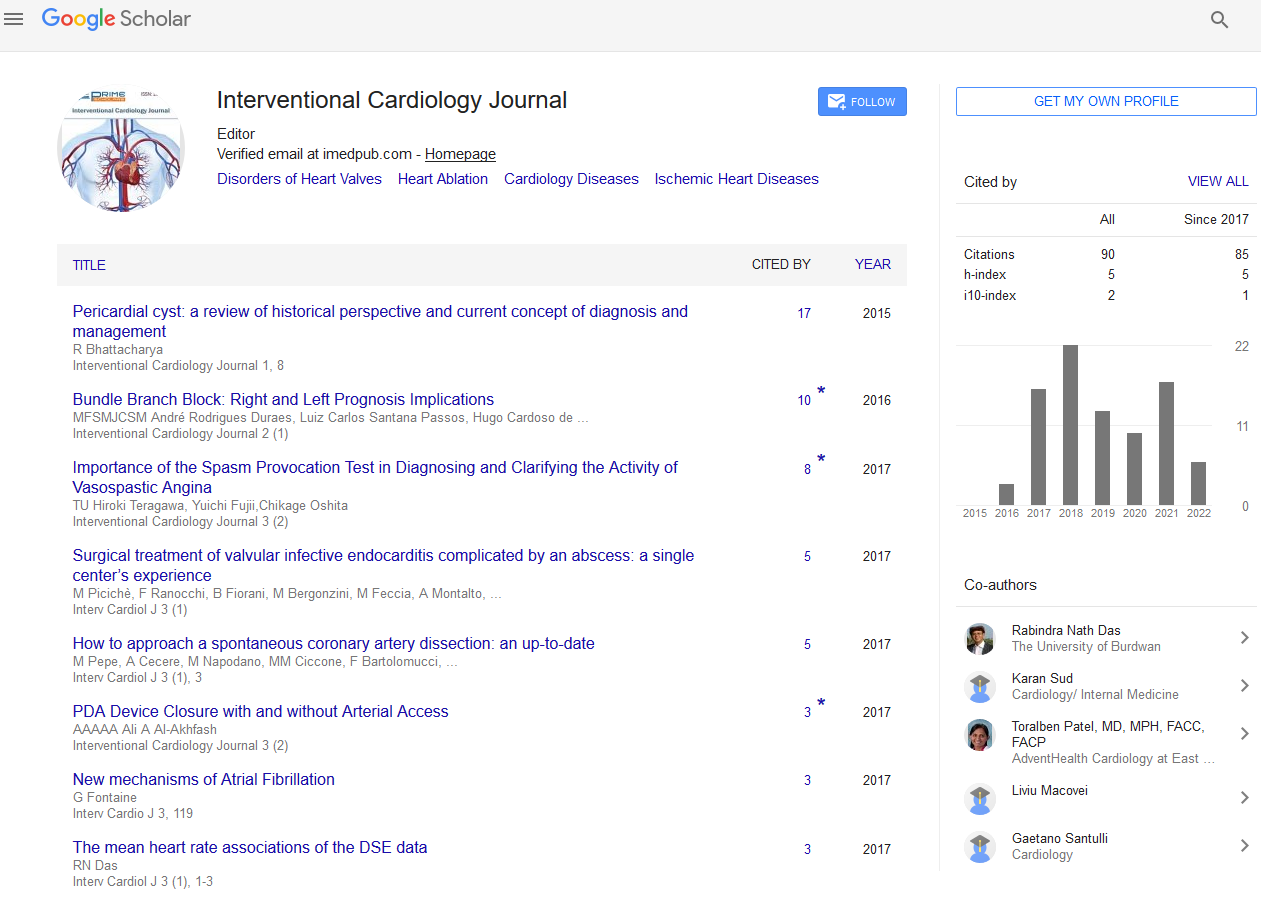Opinion - (2024) Volume 10, Issue 12
Capillaries: The Hidden Heroes of the Circulatory System
Michael Chen*
Department of Cardiology, Health Sciences University, Canada
*Correspondence:
Michael Chen,
Department of Cardiology, Health Sciences University,
Canada,
Email:
Received: 02-Dec-2024, Manuscript No. IPIC-24-22192 ;
Editor assigned: 04-Dec-2024, Pre QC No. IPIC-24-22192 (PQ);
Reviewed: 18-Dec-2024, QC No. IPIC-24-22192 ;
Revised: 23-Dec-2024, Manuscript No. IPIC-24-22192 (R);
Published:
30-Dec-2024, DOI: 10.36648/2471-8157.10.12.112
Introduction
Capillaries are among the most fascinating and vital components of the human circulatory system. These microscopic blood vessels serve as the intermediary network between arteries and veins, enabling the exchange of oxygen, nutrients, and waste products between the blood and surrounding tissues. Though small in size, capillaries play an outsized role in maintaining the body's homeostasis and overall health. This article delves into the anatomy, function, types, and significance of capillaries, shedding light on their essential role in the human body. Capillaries are the smallest blood vessels in the circulatory system, measuring approximately 5 to 10 micrometers in diameter. Their walls are composed of a single layer of endothelial cells, which rest on a thin basement membrane. This structure facilitates the efficient exchange of substances between blood and tissues. The thinness of capillary walls only one cell thick is crucial for their function, as it allows for rapid diffusion of gases, nutrients, and waste products. Capillaries are connected to arterioles on one end and venules on the other. Arterioles bring oxygen rich blood from the heart to the capillary beds, while venules collect oxygen depleted blood and transport it back to the heart through veins. The capillary network, or capillary bed, is densely distributed throughout the body.
Description
Ensuring that every cell receives the necessary nutrients and
oxygen to function properly. Capillaries are classified into
three main types based on their structure and permeability.
Continuous capillaries have uninterrupted endothelial
linings and are the least permeable type. They allow only
small molecules, such as water and ions, to pass through
tight junctions between endothelial cells. These capillaries
are found in muscles, skin, lungs, and the central nervous
system. In the brain, continuous capillaries form the blood
brain barrier, a protective shield that regulates the passage
of substances between the bloodstream and the brain.
Fenestrated capillaries have small pores or fenestrations in
their endothelial walls, which increase their permeability.
These capillaries are common in tissues where active filtration
or absorption occurs, such as the kidneys, intestines, and
endocrine glands. The pores allow larger molecules, such as
hormones and proteins, to pass through while still maintaining
selective permeability. Sinusoidal capillaries, also known as
discontinuous capillaries, have large gaps between endothelial
cells and an incomplete basement membrane. These features
make them the most permeable type of capillaries, allowing
the passage of large molecules, such as blood cells and plasma
proteins. Sinusoidal capillaries are found in the liver, spleen,
and bone marrow, where their structure supports the exchange
of large substances.
Conclusion
Capillaries perform several critical functions that are essential
for life. Their primary role is to facilitate the exchange of
substances between blood and tissues. This exchange is
driven by diffusion, osmosis, and filtration, processes that
depend on the concentration gradients and pressures within
the capillaries. Capillaries play a pivotal role in gas exchange.
Oxygen diffuses from oxygen rich blood in the capillaries into
the surrounding tissues, while carbon dioxide, a waste product
of cellular metabolism, diffuses from tissues into the capillaries
to be carried away for exhalation. Capillaries deliver essential
nutrients, such as glucose, amino acids, and fatty acids, to
tissues while collecting metabolic waste products, such as urea
and lactic acid, for elimination through the kidneys, liver, or
lungs.
Acknowledgement
None.
Conflict Of Interest
The authors declared that they have no conflict of interest.
Citation: Chen M (2024) Capillaries: The Hidden Heroes of the Circulatory System. Interv Cardiol J. 10:112.
Copyright: © 2024 Chen M. This is an open-access article distributed under the terms of the Creative Commons Attribution License, which permits unrestricted use, distribution, and reproduction in any medium, provided the original author and source are credited.

